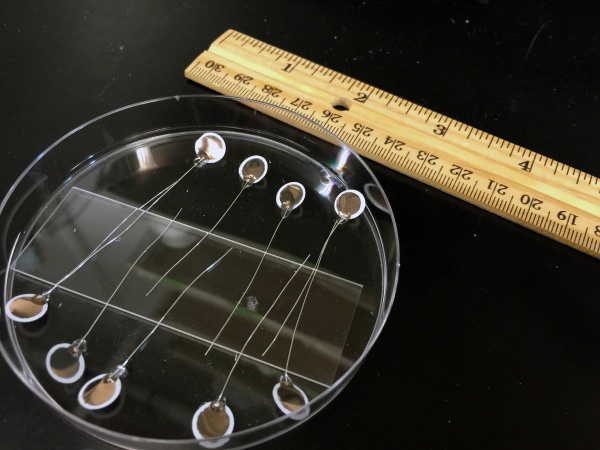|
engineers at ohio state university have developed a thin, plastic membrane inspired by protein transport through living cell membranes that could lead to the development of redox transistor batteries for electric vehicles that would allow for longer travel on a single charge.

a new membrane prevents discharge in batteries. (ohio state university)
the membrane stops rechargeable batteries from discharging when not in use and allows for rapid recharging, according to a report on the school’s website. the “smart” membrane prevents the leakage of charge between the anode and the cathode during periods of rest, which in addition to allowing the battery to hold charge longer also removes the potential for thermal runaway.
researchers combined an electrically conductive polymer with a polycarbonate filter to mimic the cell membranes in organisms, which allow the cell walls to open or close to perform certain functions. when the battery is charging or discharging then the polymer shrinks to allow electricity through, but when it is at rest then the polymer swells to close the openings through which a charge could pass.
the research was published in energy & environmental science in june. the abstract from the report read:
“we demonstrate that ion transport through polypyrrole doped with dodecylbenzenesulfonate [ppy(dbs)] formed over a pore is regulated by its electrochemical redox state. we refer to this arrangement of ppy(dbs) as an ionic redox transistor owing to its functional similarity to a bipolar junction transistor and chemical physics origins of voltage-regulated transmembrane ion transport.
“our results indicate that ionic current across the polymer in its reduced state is facilitated by the affinity of cations to immobile anionic dopant (dbs) and increases with concentration and applied transmembrane potential.
“we report a maximum conductance of 30 μs cm−1 and a current gain of 60× as the polymer switches between oxidized (vm > −200 mv) and reduced state (vm < −600 mv). a demonstration of ppy(dbs) ionic redox transistor as a smart membrane separator in an electrolytic circuit is presented to illustrate its application in electrochemical energy storage devices.”
to read more about the research that was done and its potential applications, click https://news.osu.edu/news/2016/08/23/battbrane.
|